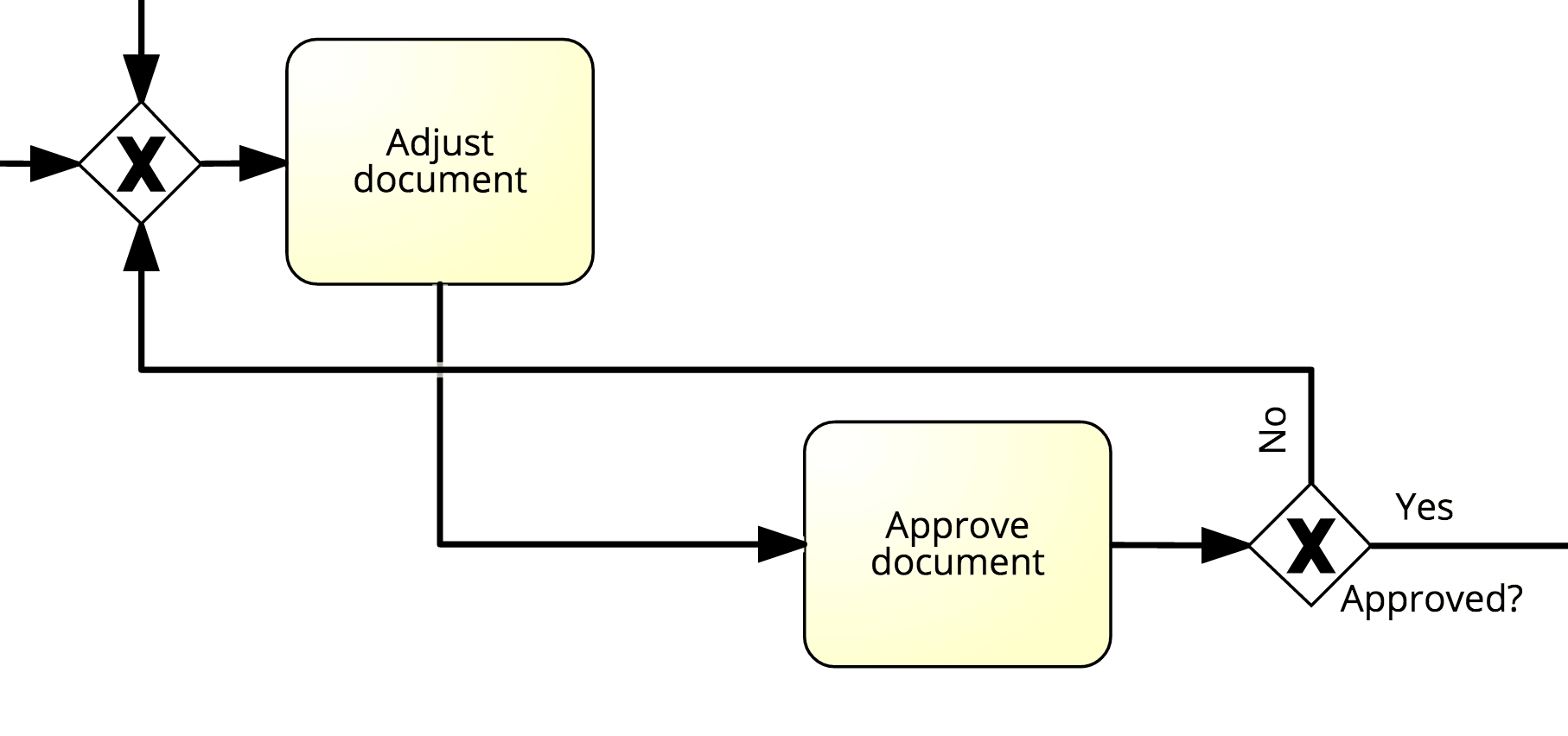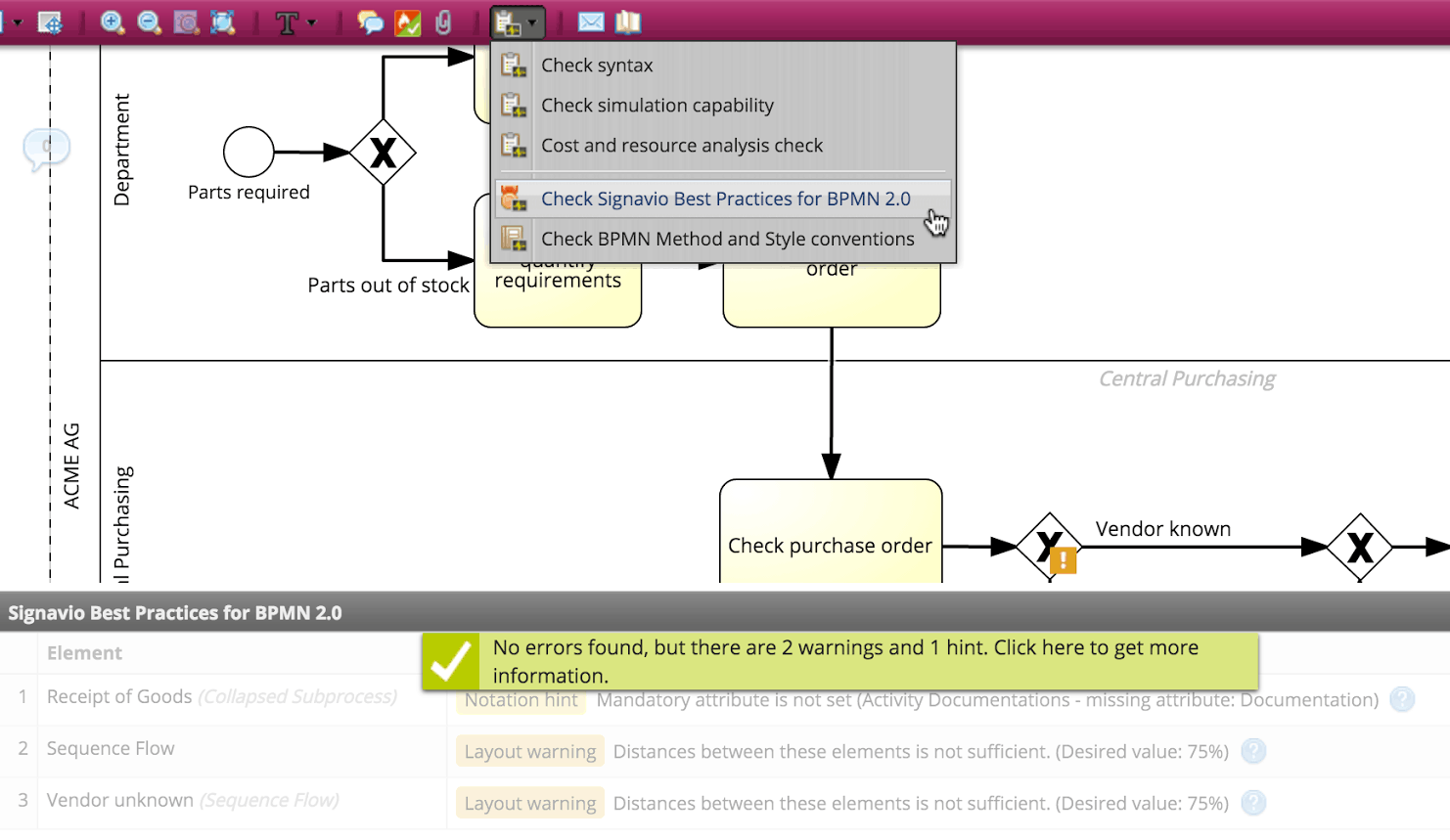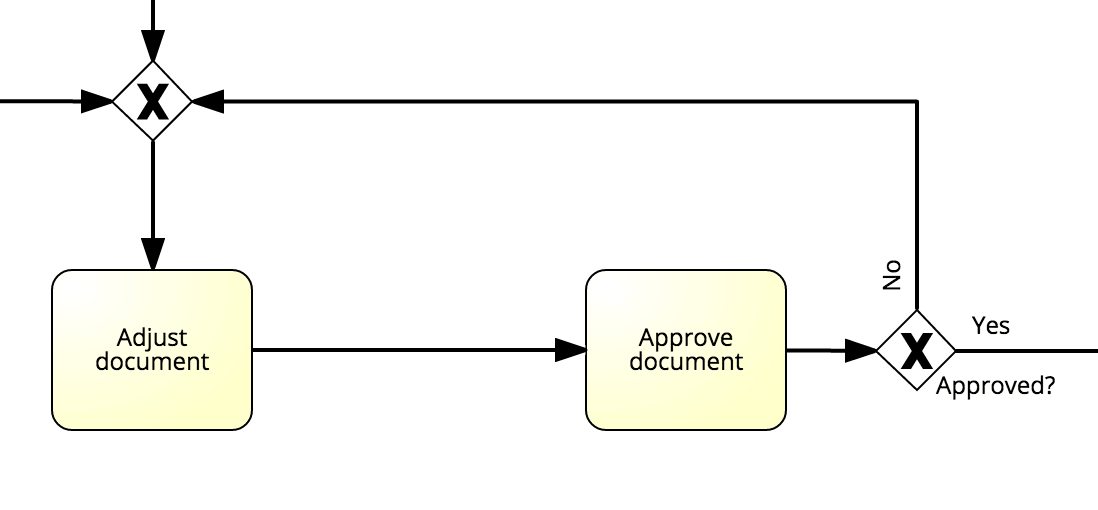In the same way that writers adhere to writing conventions and programmers to coding conventions, business process modelers employ modeling conventions to ensure clarity, sustainability and executability of their process models.
These modeling conventions go beyond mere BPMN 2.0 syntax rules: A syntactically correct process model might still be hard to read due to layout issues. It may even be impossible to understand due to ambiguous semantics.
Define and check your conventions
The Signavio Process Editor defines two sets of modeling conventions by default:
- Signavio Best Practices for BPMN 2.0 which are based on a comprehensive analysis of expert opinions, customer experiences and organization-specific modeling guidelines.
- BPMN Method and Style, which were designed by the renowned BPMN expert Bruce Silver.
To ensure conventions are used effectively, they should be clearly defined and a compliance check should be automatically executed.
You can check your model adheres to these guidelines via the toolbar of the Process Editor. Signavio analyzes the compliance of the process model automatically and displays errors, warnings and/or hints if applicable:
Diagrams are automatically checked against the 'Signavio Best Practices' when saving. To illustrate the benefits of modeling conventions, let’s take a look at some of the layout rules:
 The rule: absence of edge overlays ensures that diagrams don’t contain overlapping connectors, i.e. to avoid confusing sequence or message flows, as shown here:
The rule: absence of edge overlays ensures that diagrams don’t contain overlapping connectors, i.e. to avoid confusing sequence or message flows, as shown here:
Hint: The corrected diagram could look like this:
The rule usage of a restricted diagram size ensures modelers stick to a manageable diagram. Diagrams exceeding the size limit should be refactored using sub-processes or process links.
The Signavio Ultimate Edition allows you to create customized modeling conventions (click Setup – Define modeling conventions) in the Signavio Explorer: When creating a custom modeling convention, we recommend that you copy one of the default subsets (Signavio Best Practices or Method & Style) and adapt it according to your needs.
Configure your custom attributes
An example of a rule you may like to modify is the Definition of required mandatory attributes, as it will vary depending on your specific BPM scenario. Before defining this ruleset, it makes sense to configure your custom attributes and to then adjust the attribute configuration of your Collaboration Portal.
Examples of other rules you might want to configure are Usage of a defined BPMN subset and Definition of required dictionary links.
For further information on modeling best practices and conventions, we recommend you to read Bruce Silver’s BPMN Method & Style and to visit our BPMN Modeling Guidelines web page.


